5 Beautiful Places to Explore the Untamed Wilderness in Ireland
- January 14, 2024
- 11 Min Read
With a 1,600-mile-long coastal road called the Wild Atlantic Way, Ireland beckons travelers to discover and explore its glacier-formed landscapes, rugged beauty and untamed wilderness. From wind-whipped coastlines to majestic mountains and remote islands, Ireland offers a diverse range of landscapes to fulfill travelers looking for adventure and time spent amid good old Mother Nature.
While the call of the wild may entice you to visit Ireland, the country offers a tremendous amount of culture and hospitality to enjoy along the way. For example, there’s the unmatched affability of the Irish people; the impressive castles; the delights of Dublin (it’s the home of Guinness, after all); the fun of dining at cozy local pubs and joining in on the camaraderie among their patrons; the uncanny talent of buskers in Irish towns (Galway, in particular); Murphy’s Dingle Sea Salt ice cream, which literally melts in your mouth. Bottom line: if it’s unspoiled nature you seek, you’ll get it, along with a hefty dose of amazing experiences that can only be had in the Emerald Isle.
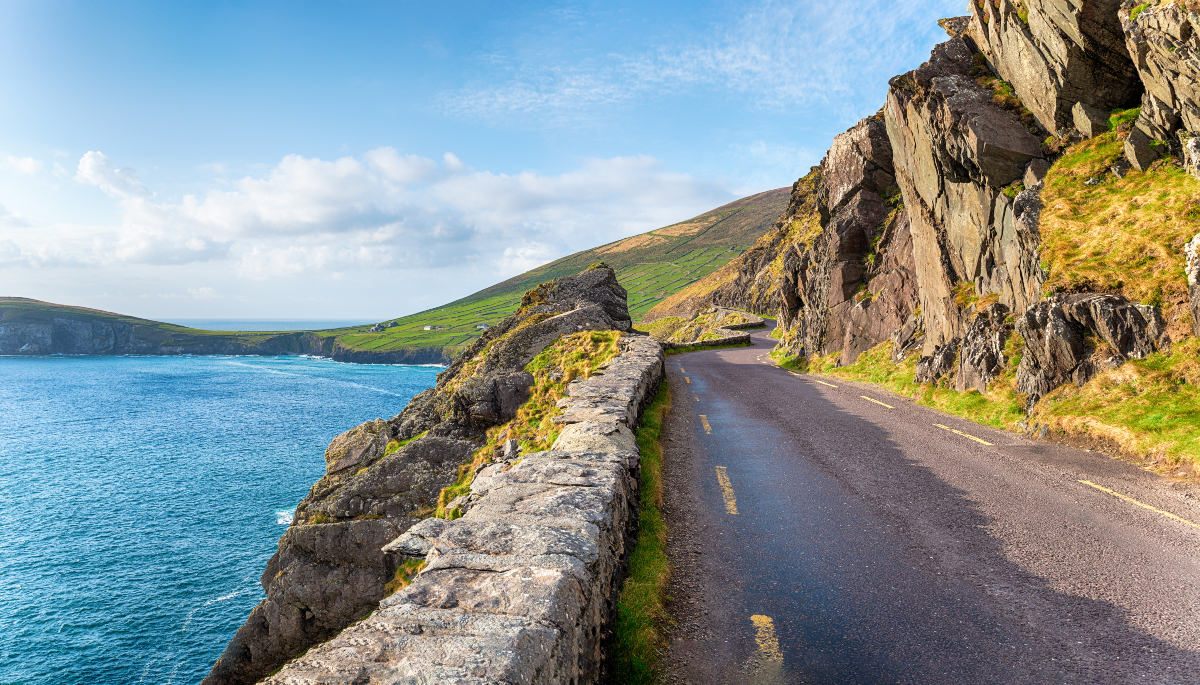
Best Things to Do in Ireland with Kids: Outdoor Adventures and Natural Escapes
In a country with so much to offer in the way of nature travel, where do you start? While this is not an exhaustive list by any means, it does reveal five of our favorite spots across the country. Ireland is so rich with outdoor experiences, that doing it all the right way requires multiple visits. So lace up your trusty hiking boots, don a waterproof jacket and join us as we introduce you to some of Ireland’s wildest places. You just may want to plan a trip (or two)!
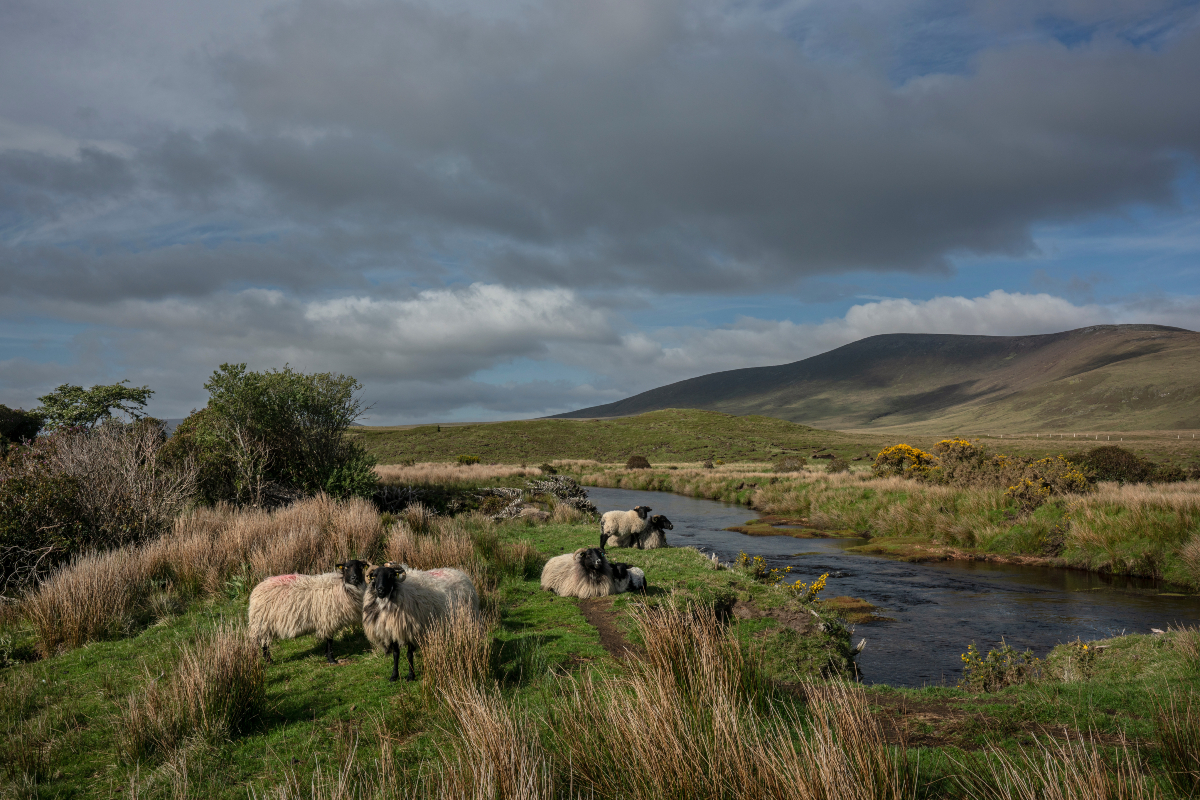
Be One with Nature in Wild Nephin National Park
County Mayo is one of the westernmost parts of Ireland’s Atlantic coast, and it’s here you will find one of Ireland’s most pristine, untouched wilderness areas. Wild Nephin National Park (formerly known as Ballycroy) is a vast expanse of untouched bogs and mountains. This national park, one of six in Ireland, is a natural landscape left intact. There are no roads, no buildings, no houses or villages visible from any point. In fact, look in every direction and you will see miles and miles of uninterrupted bogland, a carpet of orange and brown stretching into the distance over hills, through valleys and around the occasional forest or lake. This is truly a remote, immaculately preserved swath of wilderness and the perfect place to reconnect with nature.
We can help you plan the kid-friendly Ireland adventure of your dreams!
Our expert Family Travel Advisors can help you book vetted accommodations, design a custom itinerary, arrange private guides and activities, and more. Click to send us a request!
Wild Nephin provides numerous hiking trails to suit skill levels from novices to more seasoned hikers, as well as birdwatching opportunities. Some of the best trails in Wild Nephin are known as the Letterkeen Loops. The Bangor Trail, a 25-km point-to-point trail through the Nephin Beg Hills, is appropriate for the more experienced hiker.
Another awesome aspect of Wild Nephin National Park? It showcases some of the darkest, most pristine night skies in the world and is officially certified as a Gold Tier-standard International Dark Sky Park. The Mayo Dark Sky Park extends across the entire grounds, and on a clear night, visitors can see thousands of twinkling stars, planets, the Milky Way and meteor showers with the naked eye.
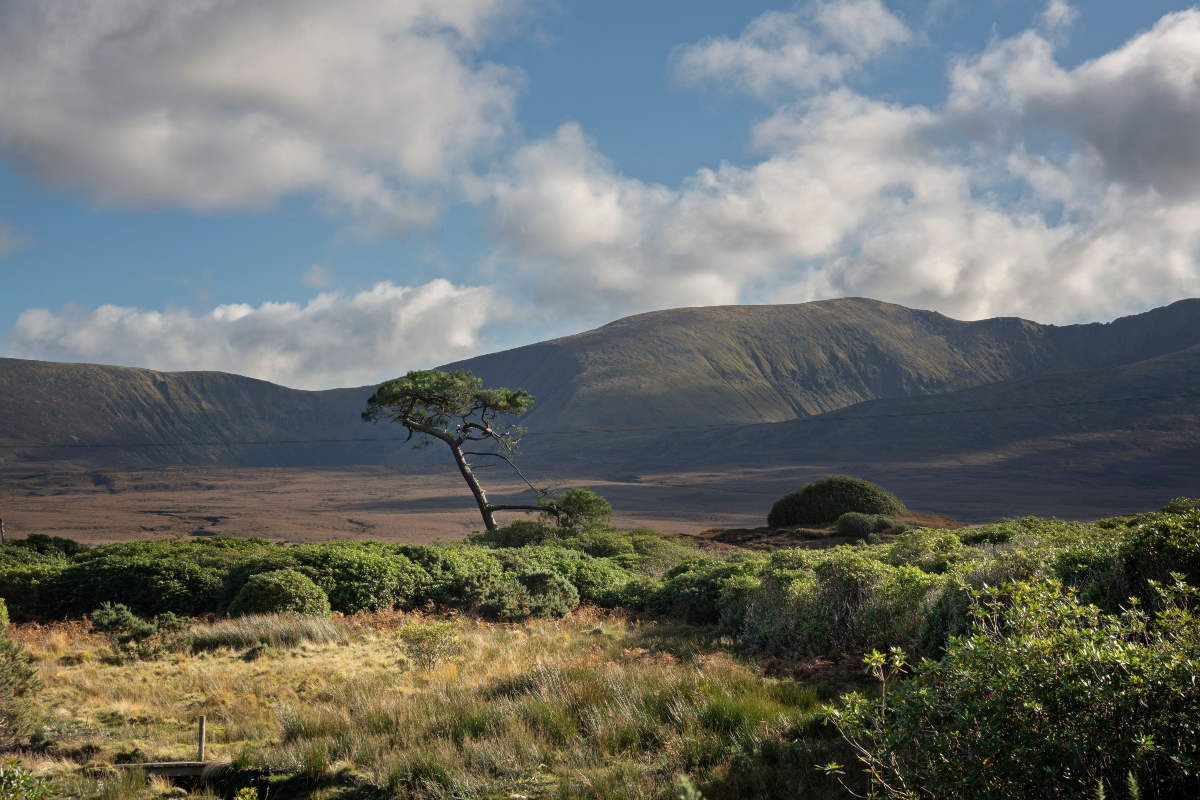
The Ballycroy Visitor Center is a good starting point for Wild Nephin National Park. It houses an interactive exhibit, experienced National Park guides and a cafe, and is the jumping-off point for the Tóchar Daithí Bán Nature Trail (2 km). This trail is a good choice for families with younger children. Even though it is a short trek, it offers dramatic views of Achill Island and panoramic views of the Nephin Beg Mountains.
Camping is allowed at designated campsites within the park (register via the official Wild Nephin National Park website first). Although there are no accommodations available within Wild Nephin, there are plenty of options within driving distance around Achill Island, Belmullet and the Westport-Newport-Castlebar triangle.
TIP: While Ireland’s national parks are explorable all year round, the most popular time to visit is from late spring to early fall, with summer being the peak season. All Irish national parks offer free entry.

Bike, Dive or Off-Road Your Way Through the Aran Islands
For a totally different type of immersion in the natural world, hop aboard Aran Island Ferries to the Aran Islands of Inis Mór (Inishmore), Inis Meáin (Inishmaan) and Inis Oírr (Inisheer). Although part of County Galway, the picturesque Aran Islands are a geographic extension of the Burren in County Clare. Consisting of three limestone islands spread across the mouth of Galway Bay, the Aran Islands are remote and cut off from the mainland, giving them the feeling of being frozen in time. There aren’t many places left in Ireland with such well-preserved Irish culture, heritage and language. Life moves a little bit slower here. Unlike Wild Nephin National Park where the emphasis lies on hiking and stargazing, the Aran Islands offer an impressive amount of adventure travel in the way of hiking, biking, scuba diving, off-roading and more.
Inis Mór is the largest and westernmost of the three Aran Islands. It has the feel of an isolated fishing village; its most famous sight is Dún Aonghasa, a designated UNESCO world heritage site and prehistoric fort with a spectacular position on a cliff’s edge. On the northern coast of Inis Mór you’ll find Kilmurvey Beach, one of Galway’s most stunning beaches. This Blue Flag beach has a lifeguard on duty during high season, so it’s a safe and scenic spot to take a dip. The island also has a dive academy, and the Aran Islands have a reputation for being one of the best places to dive in Europe, with the chance to see vibrant sea anemones, colorful coral, spiny dogfish, friendly dolphins and even seals.
If it’s hiking you prefer, you will find incredible views on the 5-mile Lúb Dún Eochla walk. Would you rather go back in time? Book a traditional pony and trap tour (tip: call ahead so you’re ready to go once you arrive on the island). Along the historic route, you’ll see monastic sites, the island’s famous stone walls and the prehistoric stone fort Dún Aonghasa. If you are looking or something more adrenaline-heavy, choose the Aran Off-Road Experience. A guide will take you through the wild landscape of the island in a Land Rover Defender Jeep, reaching parts of the island that no other vehicle can. Other fun activities on Inis Mór include taking a tour of the Aran Goat Cheese Farm or seaweed foraging with Bláth na Mara.

Inis Meáin, the middle island between Inis Mór and Inis Oírr, is the least populated of the Aran Islands. The best way to see Inis Meáin is to rent bikes and explore historic sites such as Dun Chonchúir (Conor’s Fort), the largest fort on the Aran Islands, and Synge’s Chair, a lookout point on the edge of a rugged cliff with expansive views of the Atlantic. Another fun stop would be the Inis Meain Sweater factory shop to experience the world-renowned craft of Irish sweater making.
Inis Oírr is the smallest and most easterly of the three Aran Islands. A majestic fortress on a slope, a shipwreck and a lighthouse are popular destinations with visitors. The Lúb Ceathrú an Locha looped walk takes you past An Loch Mór, the Big Lake and the Plassey shipwreck. In the southeast of the island, you will find an incomparable view of the world-famous Cliffs of Moher on the Irish mainland, only 5 miles away.
Biking is a fantastic way to explore all three of the Aran Islands, and bike rentals are available on Inis Mór, Inis Oírr and Inis Meáin. It’s a good idea to book ahead, particularly during July and August. Accommodations on the Aran Islands range from traditional B&Bs to hotels and even glamping.

Explore Moonlike Terrain at the Burren and Cliffs of Moher UNESCO Geopark
For a one-of-a-kind adventure, visit the UNESCO-designated Burren and Cliffs of Moher Geopark in County Clare — home to the longest cave system in Ireland, the strikingly unique Burren National Park and the Slieve Carran Nature Reserve. Burren National Park is a vast moonlike landscape — an ancient seabed that rose out of the water before being scraped by huge icebergs, extending beneath the sea and rising again to form the Aran Islands. This otherworldly scenery is gouged with cracks and crevices, creating a natural rugged pavement marked with rock formations, fossils, caves and floral rarities. It’s truly unlike anything you’ve ever seen before, and a marvel of natural history. From May to August, an amazing array of flowers creates bright splashes of color in this unusual landscape, making it a great time to visit the area.
Within in the Burren National Park and Slieve Carran Nature Reserve, there are seven way-marked walking trails. The walks vary from a short 30-minute loop walk to a 3-hour walk over limestone hills, making a visit to the park accessible to a variety of groups. The Burren National Park Information Point, open year-round, is the best place to start your hiking adventure. You can also rent e-bikes and cycle through the Burren region, which would be a fun option with older kids.
Take your adventure skills underground and explore the deepest point of the Burren at Doolin Cave, descending more than 200 feet to view the Great Stalactite, which measures an impressive 23 feet long (the largest in Europe). Also, not to be missed is Aillwee Cave. Carved out of limestone, it cuts one-third of a mile into the heart of the mountains. With a guide, you can explore the cave’s beautiful caverns, walk over bridged chasms, marvel at an underground frozen waterfall and explore wonderful fossils and formations from millions of years ago.
Finally, hit up one of the most renowned Irish landmarks, the Cliffs of Moher. Star out at the Cliffs of Moher Visitor Center, and don’t forget to keep a look out for puffins!
There are no shortages of places to stay in The Burren region, which offers a variety of small hotels, guesthouses and B&Bs.
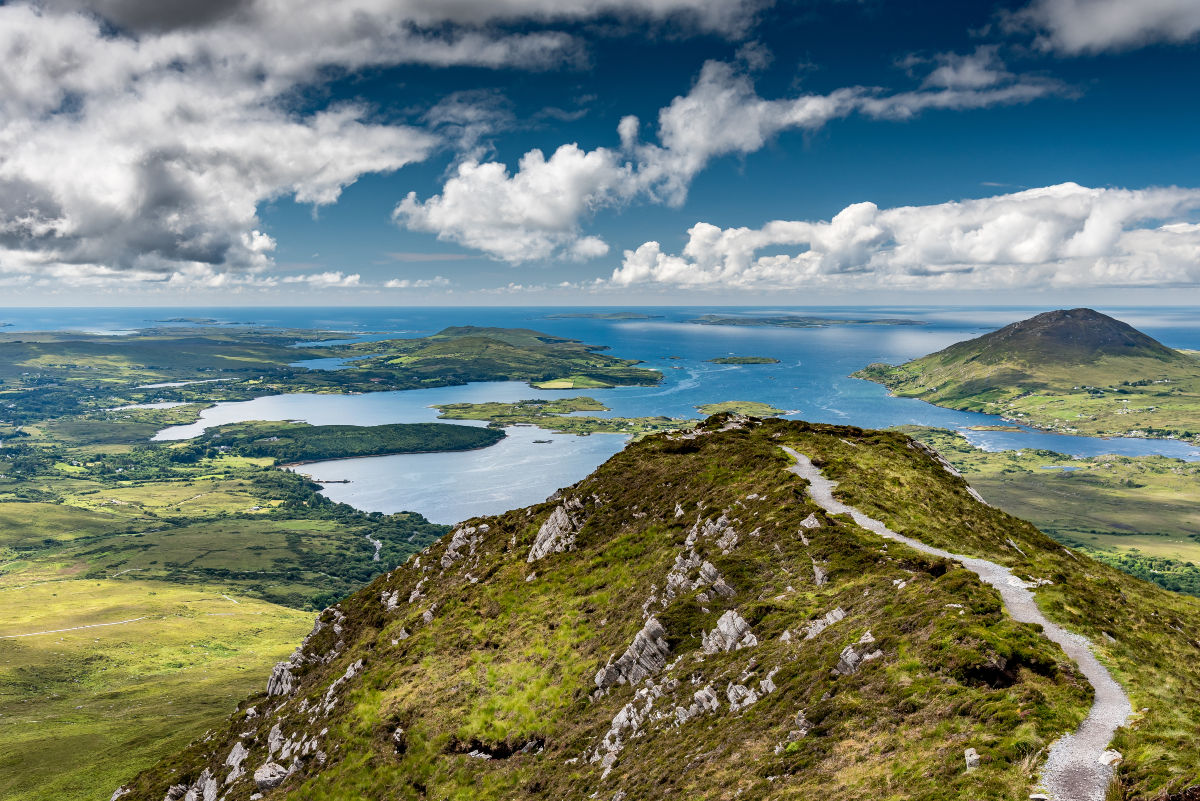
Soak in the Incredible Views of Connemara National Park
This one is for the avid hikers. Connemara National Park in County Galway is home to stunning scenery and some of the best hiking trails in Ireland. The park’s horizon is dominated by more than 50 mountains in four tightly packed ranges: the Twelve Bens, Maum Turks, Partry and Sheffrey. The park is easily accessible by car and the main entrance is located along the Wild Atlantic Way, which makes visiting a must if you are making your way along this coastal road.
Enter the park at Connemara Visitor Centre and choose from one of several great hiking trails for all ages and abilities. The trails are well-maintained and clearly signposted.
The gold standard of hikes in Connemara is the Diamond Hill Walk. As you scramble up Diamond Hill on a clear day, you’ll be treated to beautiful views of the islands of Inishturk, Inishbofin and Inishshark; Tully Mountain; the Twelve Bens; Kylemore Lough; and Mweelrea (the highest mountain in Connaught). The Diamond hill Lower Trail measures around 1.5 miles and has modest climbs along the route. The Upper Trail is a continuation of the Lower Trail and takes hikers to the summit of Diamond Hill via a narrow ridge that stretches for a quarter mile. The entire circuit measures around 4.5 miles. At the summit, hikers will be rewarded with unforgettable 360-degree views of the mountains and the Atlantic.
If you have little hikers in tow and need a more manageable trail, the Ellis Wood Nature Trail and Sruffaunboy Walk are great options. Speaking of younger hikers, they will be delighted if your traveling party is lucky enough to see a wild herd of Connemara ponies roaming free. Connemara is famous for its rugged landscape, home to Connemara ponies, sheep, red deer, skylarks and peregrine falcons.
Wild camping is permitted in Connemara National Park, but if that is not in your plans, Connemara lies roughly halfway between Galway and Westport, and both cities have a variety of good accommodation options.
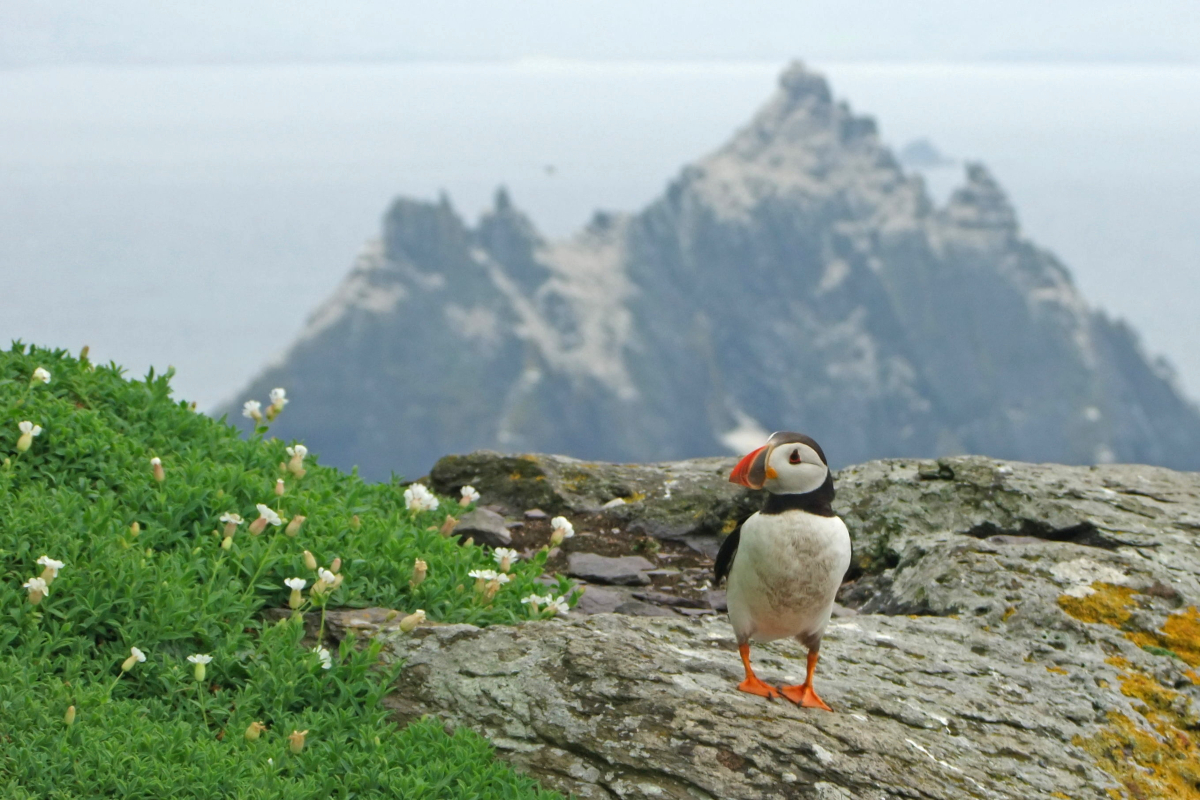
Be One of a Few to Experience the Remote Skellig Michael
Do you want to go truly off the beaten path? Look no further than Skellig Michael (Sceilg Mhichíl) in County Kerry. This is one of the two Skellig Islands and sits about 6 miles off the coast of Kerry. It’s known for its rugged, dramatic landscape, winding stone pathways and famous 7th-century monastic settlement, which was declared a UNESCO World Heritage Site in 1996. It also grew hugely popular after the Star Wars movie The Force Awakens was filmed here.
Only 180 people per day are allowed to step foot on the island; therefore, you must book your tickets many weeks in advance. Even with a reservation, storms and high winds frequently cancel excursions for the day, so be prepared to pivot. There are several operators who take visitors to this rugged landscape; we suggest doing your research before choosing a specific tour company. It’s a 1-hour boat ride from the mainland to Skellig Michael and, depending on the day, seas can be rough. Once you arrive at the island, you climb 600 steps up a stone pathway, to be rewarded at the top by amazing views of the mainland and the chance to explore the medieval monastery. For hundreds of years, Christian monks inhabited this island, living off the land and sheltering in stone beehive huts. The structures they built remain intact and unchanged today, making it a very special place. The season for landing tours on Skellig Michael begins mid-May and finishes in late September.
There is an incredible wealth of bird life on and around Skellig Michael. Puffins arrive on the island in late spring, and if you are lucky, you will catch them during your visit.
Note: This adventure is recommended for families with older children, as most operators will not take those under the age of 12. There are eco-tours of the Skellig Islands where visitors remain on the boat and see the wildlife and landscape up close; younger children are welcome on these trips.
Go for the Adventure, Treasure the Encounters
Go to Ireland for the dramatic landscape. Go for the limestone caves. Go for the some of the best diving in Europe. Go for the remote islands. Go for the striking scenery you simply can’t experience anywhere else. But take time to appreciate the wonderful moments of connection you happen upon along the way. It’s the conversations with locals, the warmth of a firelit pub, the amazingly talented singers and Irish folk dancers that make this place so much more than just a spot to see immense natural beauty.
Relevant Links:
Browse all family-friendly destinations and accommodations in Ireland on Ciao Bambino
A perfect 10-day Ireland itinerary with kids
10 things to do in Ireland off the beaten path
Something different in Europe: A family vacation to Northern Ireland
Editor’s note: This post was accurate when published. We advise checking independently for the latest information and updates. Ciao Bambino does not accept responsibility or liability for any errors or omissions in, or for any actions taken based on, the information presented.






 travel recommendations, inspiring adventures, and exclusive travel offers
travel recommendations, inspiring adventures, and exclusive travel offers